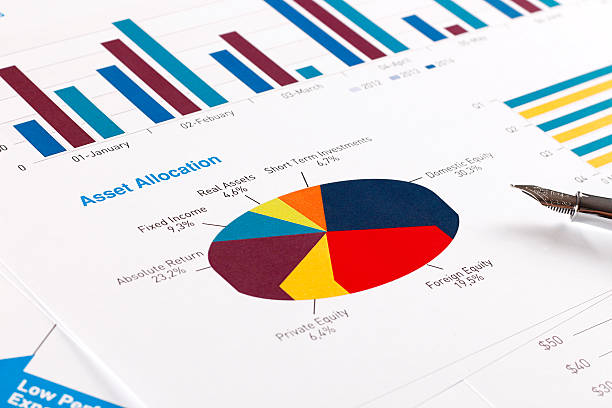
Investing in fixed income has long been a cornerstone of balanced portfolios, offering stability and regular income. Today, fixed income ETFs have become a popular way to access the bond market without the complexities of buying individual bonds. These ETFs provide diversification, liquidity, and simplicity, making them an excellent choice for both novice and experienced investors. In this article, we’ll explore the basics of fixed income ETFs, highlight the most popular funds, and provide insights into building a solid portfolio with these tools.
What Are Fixed Income ETFs?
Fixed income ETFs are exchange-traded funds that hold a basket of bonds or other fixed income instruments. These can include government bonds, corporate bonds, municipal bonds, or mortgage-backed securities. By investing in these funds, investors gain exposure to multiple bonds in a single transaction, reducing individual bond risks while maintaining regular interest income.
Benefits of Fixed Income ETFs
Investors are increasingly turning to bond ETFs due to their numerous advantages over traditional bond investments:
- Liquidity: Unlike individual bonds, which can be hard to trade, ETFs can be bought and sold throughout the trading day.
- Diversification: A single ETF can hold hundreds of bonds, reducing the risk associated with any one issuer defaulting.
- Cost-Effectiveness: With low management fees and no need for active trading, fixed income ETFs are often cheaper than actively managed bond funds.
- Transparency: Most ETFs disclose their holdings daily, offering investors clear insights into their portfolios.
For a deeper understanding of how diversification works, check out our Guide on Stock Charting Patterns.
Types of Fixed Income ETFs
Fixed income ETFs come in various categories, each designed to meet specific investment goals:
- Government Bond ETFs
These funds invest in government securities like U.S. Treasury bonds. They are considered low-risk and provide stability, especially during economic downturns.
- Corporate Bond ETFs
Corporate bond ETFs hold bonds issued by companies, offering higher yields compared to government bonds but with added risk.
- Municipal Bond ETFs
These focus on bonds issued by states, cities, or other municipalities. The interest income is often exempt from federal taxes, making them a good option for tax-sensitive investors.
- High-Yield Bond ETFs
Also known as “junk bond ETFs,” these funds invest in lower-rated bonds with higher yields. While they offer greater income potential, they carry a higher risk of default.
- International Bond ETFs
These ETFs invest in bonds from foreign governments or corporations, providing global diversification.
Most Popular Fixed Income ETFs

Here’s a look at some of the most widely held and largest bond ETFs available today:
iShares Core U.S. Aggregate Bond ETF (AGG)
- Overview: This fund tracks the Bloomberg U.S. Aggregate Bond Index, providing exposure to investment-grade bonds.
- Assets Under Management (AUM): Over $90 billion, making it one of the biggest bond ETFs.
- Why It’s Popular: AGG offers broad exposure to the bond market with a low expense ratio of 0.03%.
- Best For: Conservative investors seeking diversified bond exposure.
Vanguard Total Bond Market ETF (BND)
- Overview: Tracks the Bloomberg U.S. Aggregate Float Adjusted Index, similar to AGG.
- AUM: Around $85 billion.
- Why It’s Popular: Known for its low costs and comprehensive bond market exposure.
- Best For: Long-term investors looking for a core bond holding.
SPDR Bloomberg High Yield Bond ETF (JNK)
- Overview: Focuses on high-yield bonds, offering greater income potential.
- AUM: Approximately $10 billion.
- Why It’s Popular: Ideal for investors willing to take on more risk for higher returns.
- Best For: Aggressive investors looking for high yields.
iShares iBoxx $ Investment Grade Corporate Bond ETF (LQD)
- Overview: This fund invests in high-quality corporate bonds.
- AUM: Nearly $40 billion.
- Why It’s Popular: Provides exposure to large, stable companies with solid credit ratings.
- Best For: Income-focused investors.
Vanguard Intermediate-Term Corporate Bond ETF (VCIT)
- Overview: Invests in corporate bonds with maturities of 5-10 years.
- AUM: Over $25 billion.
- Why It’s Popular: Offers a balance between yield and interest rate risk.
- Best For: Investors seeking moderate risk with reasonable returns.

Building a Fixed Income Portfolio with ETFs
When constructing a portfolio, consider using a mix of bond ETFs to balance risk and reward. Here’s an example:
- Core Holdings: Use funds like AGG or BND for broad, stable exposure.
- Income Boosters: Add JNK or other high-yield ETFs for greater income potential.
- Tax Efficiency: Include municipal bond ETFs if tax savings are a priority.
- Global Diversification: Invest in international bond ETFs to reduce country-specific risks.
For strategies on portfolio construction, refer to our Key Traits of Successful Traders and How to Read Stock Charts guides.
Risks of Fixed Income ETFs
While fixed income ETFs offer numerous benefits, they also come with certain risks:
- Interest Rate Sensitivity: Bond prices often fall when interest rates rise.
- Credit Risk: High-yield bonds carry a higher risk of issuer default.
- Liquidity Risk: Some ETFs may face reduced liquidity during volatile markets.
For insights on managing trading risks, explore our article on Trading Psychology.
Final Thoughts on Fixed Income ETFs
Fixed income ETFs provide an efficient and diversified way to invest in bonds, offering opportunities for stability and income across various market conditions. From the largest bond ETFs like AGG and BND to more specialized options like JNK and VCIT, there’s an ETF to suit every investor’s needs. Whether you’re building a core portfolio or seeking high yields, fixed income ETFs are a valuable tool for today’s investors.
If you’re new to ETFs, check out our Guide to Reading Stock Charts for foundational knowledge. With the right strategy and tools, investing in bonds can be a simple and rewarding part of your financial journey.
External Resources for Fixed Income ETF Research
To learn more about bond ETFs, consider these external resources:
- Morningstar Fixed Income ETF Screener: Offers detailed performance data and analysis.
- ETF.com Bond ETF Hub: Comprehensive information on bond ETFs.
- U.S. Treasury Direct: For a deeper understanding of government bonds.

